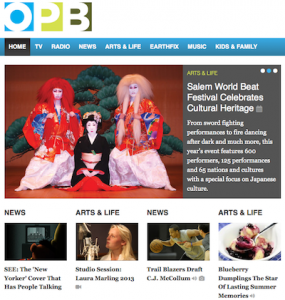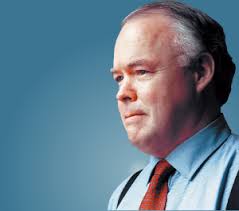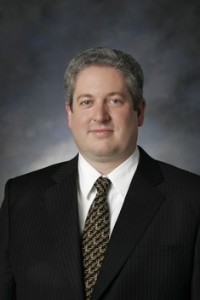In March 2013, Oregon Public Broadcasting (OPB) hired a former Associated Press reporter to undertake an ambitious vision: Build a robust statewide news network with OPB as the linchpin.
For her first several months, Julia Silverman, OPB’s Director of Content Partnerships, has been traversing the state, talking to nearly every daily, weekly, tribal and college newspaper, television station and digital blog.
Her goal: persuading some 40 to 50 news outlets to partner in sharing their content with OPB and its media partners while using shared stories themselves.
“Some people get [partnerships] right away and it’s an automatic ‘yes.’”
“I really regard this as a start-up,” said Morgan Holm, OPB’s senior vice president and chief content officer.
With The Oregonian, the big Portland daily, pulling back on its statewide reporting and its daily delivery, and with AP’s state presence diminishing, Holm said a newspaper colleague prodded him: “OPB was the last statewide media and we’d better step up. … So I told my boss, we’d better figure out a way to work with newspapers.”
OPB joined with the Oregon Community Foundation and in 2012 snagged a $300,000 grant from the Knight Foundation’s Community Information Challenge program. OPB and the community foundation raised funds to match the grant, and the infrastructure for a collaborative statewide news network has begun to take shape.
 “We can’t do this on our own,” said Silverman, who is spearheading the collaborations. “We have only four reporters – three in Portland and one in Bend, Oregon.”
“We can’t do this on our own,” said Silverman, who is spearheading the collaborations. “We have only four reporters – three in Portland and one in Bend, Oregon.”
OPB is a key player in a well-established news partnership with public radio stations in Oregon, Washington and Idaho.The “Northwest News Network” provides coverage around the region and includes a state capitol correspondent in Salem. Coverage of environmental and energy issues comes from Earth Fix, an OPB-led collaborative funded by the Corporation for Public Broadcasting. OPB must find support to continue it in the future.
“We are one of the only media that reaches everywhere – whether you live in Portland or Ontario, which is in a different time zone,” Silverman said. “I was just out in eastern Oregon,” she said. “It was two hours between towns with only sagebrush in between.”
She views her mission as not just focusing on the state’s metro papers, but also the smaller newspapers who are not AP members, but may have a great story “but it doesn’t travel.” Or the AP may not put it on the wire until a couple days after it’s been published.
“Some people get it right away and it’s an automatic ‘yes,’” Silverman said. “Some people ask: What’s in it for me?”
A lot, if OPB’s plans take hold. Silverman is approaching her task in stages. First is outreach to existing news organizations to persuade them of the benefits of partnering. “Then,” she said, “I will transition to more of a curator/editor.”
In that role, she will sift through partner stories and push out some 10-15 stories a day to form the “core of a thoughtful statewide news report – news of public interest, not the latest meth bust.”
That may involve editing, say, a 900-word story into 300 words for space-challenged newspapers. She will also be editing OPB staff content, much of it written for radio, for print publications.
The last part, she said, is to take partner content and turn it into radio spots that can be read on the air. She also hopes to develop a corps of reporters around the state who will get audio training and participate in debriefs. “That’s nice brand promotion for [their] newspapers,” Silverman said.
By December 2013, OPB plans to roll out a project website with top news stories from around the state. “We hope it will be a traffic driver to the partner sites as well,” although Silverman concedes the project will have to figure out how to prompt readers to click through on links to partner content.
OPB took a cue from Minnesota Public Radio’s “Minnesota Today,” which curates and aggregates content from public officials, bloggers and business or industry experts throughout the state, but does not rely on formal media partnerships.
OPB began its efforts before paywalls at Oregon newspapers really took off and The Oregonian announced major changes. Now, most of the state’s papers charge customers for digital access, although a majority of the paywalls are metered, giving viewers free access to a certain number of articles before charges apply, “which is good for us,” Silverman said. One chain has a hard paywall, requiring payment to see anything. “They are among the only ones who said ‘no,’” she said.

Steve Forrester
Asked about the pros and cons of partnering, Steve Forrester, editor and publisher of The Daily Astorian near the Pacific Coast, says, “It’s all pro in my book. We’d be foolish not to.” He’s already been collaborating on regular radio programs with his local community radio station.
OPB’s efforts occur in a rapidly changing media landscape. The Oregonian announced in mid-June 2013 that it would cut home delivery to four days a week and sell only street editions the other three days. It laid off nearly 100 of its 650 employees, including as many as 49 in the newsroom. It also announced the creation of a new company, the Oregonian Media Group, to “expand news and information products” in Oregon and Southwest Washington.
Holm sees The Oregonian’s latest moves as another part of the strategy employed by its parent company, Advance Publications Inc., in New Orleans, Cleveland and elsewhere.
“Like many people, I am deeply concerned about the loss of reporting capacity and institutional knowledge that will result from these changes,” he said. “I know OPB can’t singlehandedly fill that gap. But we must continue to meet our public-service obligation through initiatives like this content exchange because it can provide a place for people to find news from all over the state while The Oregonian goes through this period of painful adjustment.”

Morgan Holm
In the meantime, he said, OPB is open to any discussions with The Oregonian about supporting “as much strong, original journalism as possible” around the state.
Some of OPB’s prospective partners are enthusiastic about a statewide news network’s ability to break through their isolation. Others express concern that they don’t have a large enough news hole to publish more stories, but Silverman tells them their online space is unlimited and they can add state and regional tabs.
“TV stations are a little tricky,” she said “They all want to be the only one in their market.”
The biggest pushback, Holm said, is: What is it going to cost me? “I don’t have the answer yet because it all depends on the number of partners.”
For now, Holm said, he is shouldering “a significant commitment.” OPB is picking up the tab for Publish2‘s system of content sharing. It makes it easier to connect various partner content management systems, create feeds for different delivery platforms and feed content directly into partner systems.
Down the road, partners will be asked to pay for the costs of editing and curating. Silverman says it may be as little as $50 a month for a small community paper to a couple hundred dollars for a larger one. “It’s on me to make it valuable enough,” Silverman said, but also “make it clear this is not a moneymaker for OPB.”
Holm would like to see OPB develop a local-news presence on TV but for the moment he’s trying to build a place for shared news about statewide issues.
“I think we are seen as a good middle ground. We can highlight; we can curate,” he said. “It’s a little bit like a Good Housekeeping Seal of Approval.”
“People do ask us: Is this a replacement for AP?” Holm said. ‘I say: ‘For the moment, it’s not.’”
But he says he can see a future where many state news outlets could do without AP “and not lose any ground” although they’d need to find a way to get sports coverage.
As things move forward, Holm is betting a statewide news network will help a lot of news outlets in the state. “If it doesn’t meet a need,” he said, “we shouldn’t do it.”






